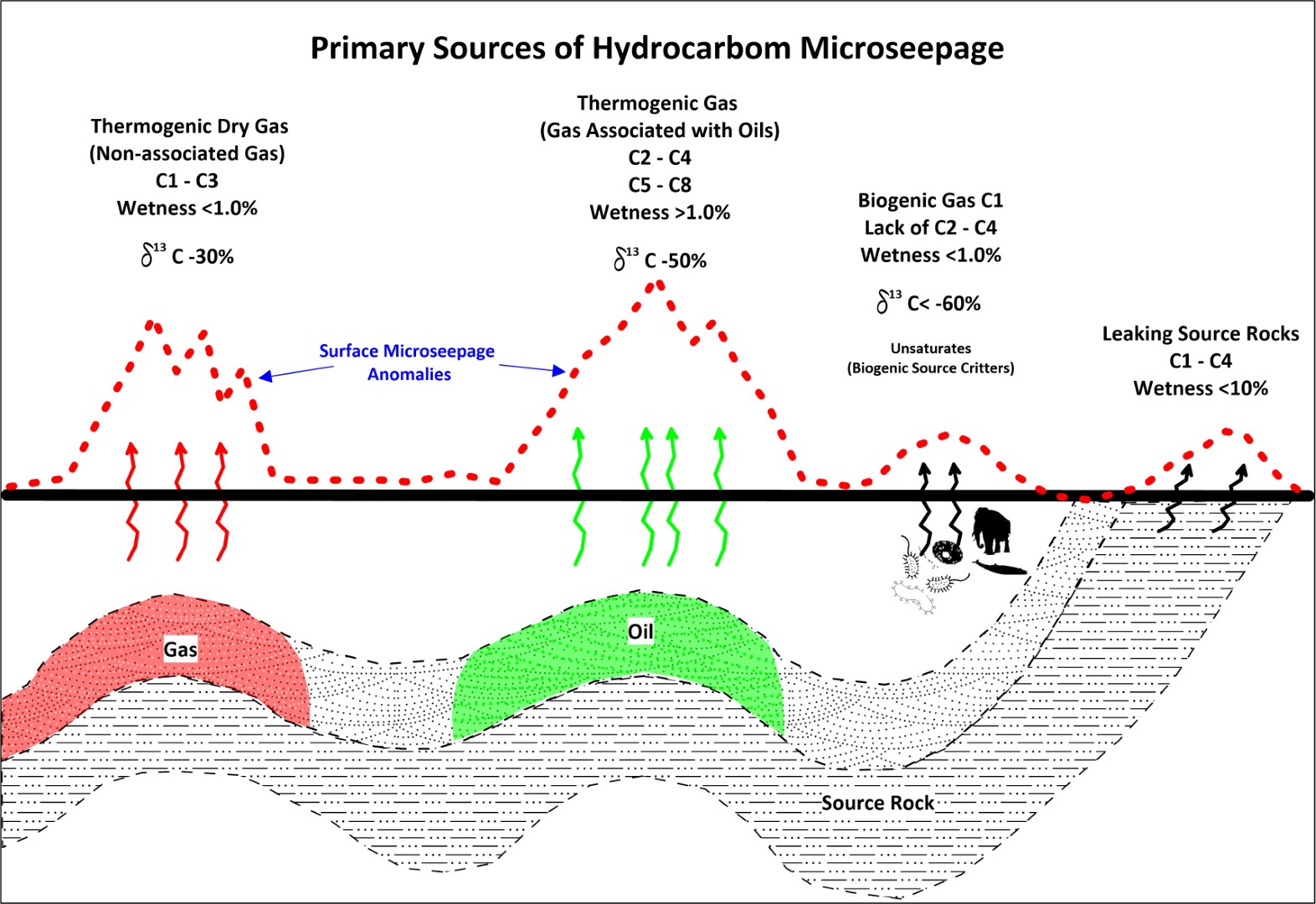Surface Geochemical Surveys for Hydrocarbon Detection
Surface geochemical exploration for petroleum is the search for surface or near-surface occurrences of hydrocarbons and their alteration products.
Services
- Survey Design
- Analytical Program
- Fieldwork – Sampling
- Analytical Work through E&P GeoFS
- Analytical Interpretation and Reporting
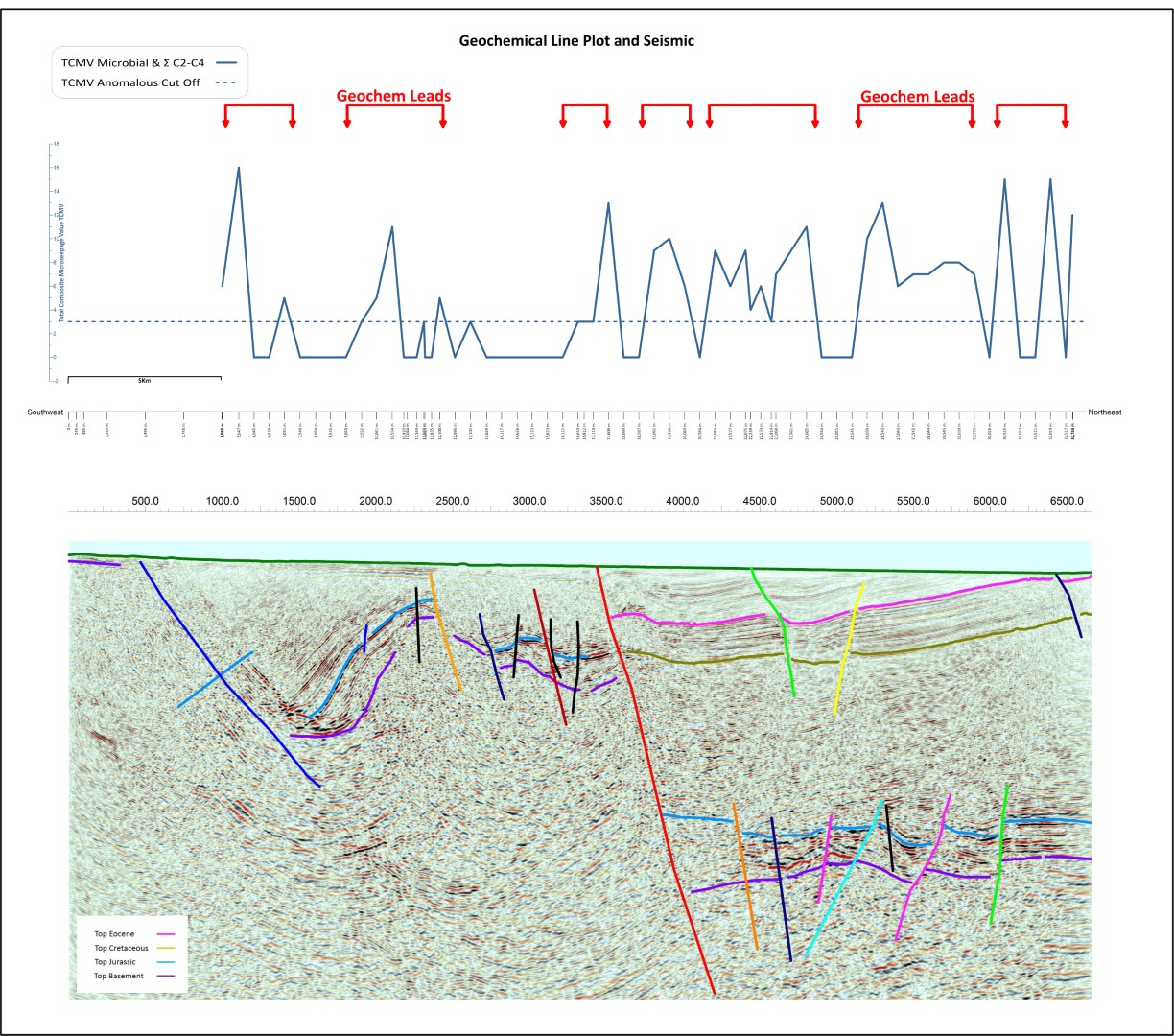
Basics of Hydrocarbon Microseepage
The vast majority of oil/gas accumulations lose light hydrocarbons to the surface, producing a detectible surface geochemical expression. Prospects associated with such a geochemical anomaly are 4 to 6 times more likely to result in a commercial discovery than prospects lacking such an anomaly. Figure-1 below shows the primary sources of hydrocarbon microseepage.
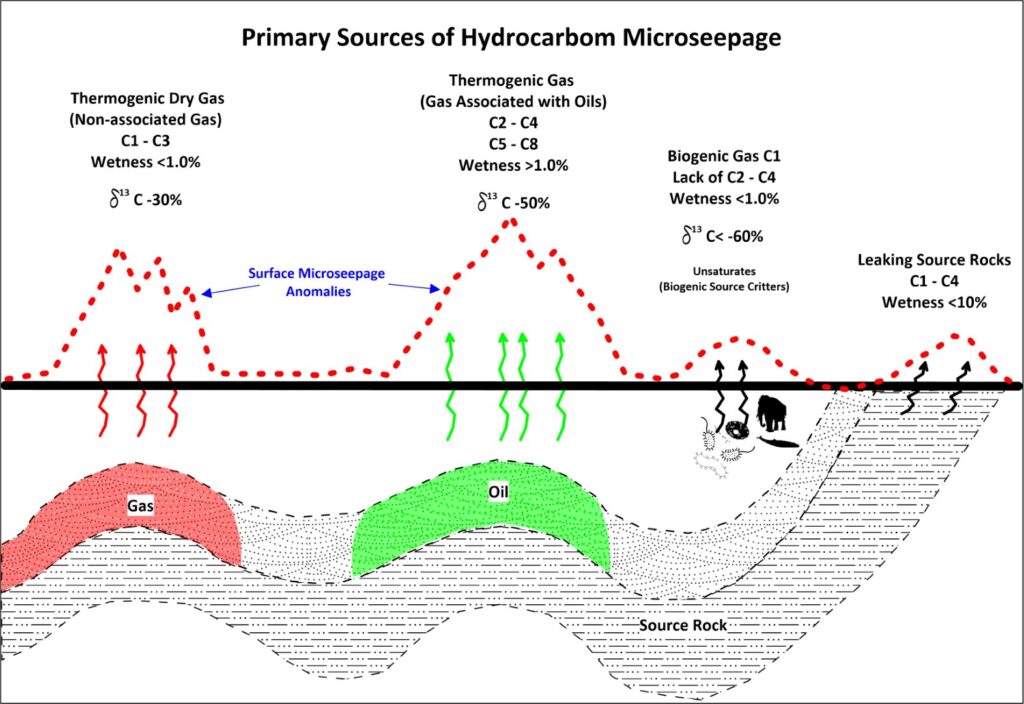
Figure-1 Primary Sources of Hydrocarbon Microseepage
Microseepage Assumptions
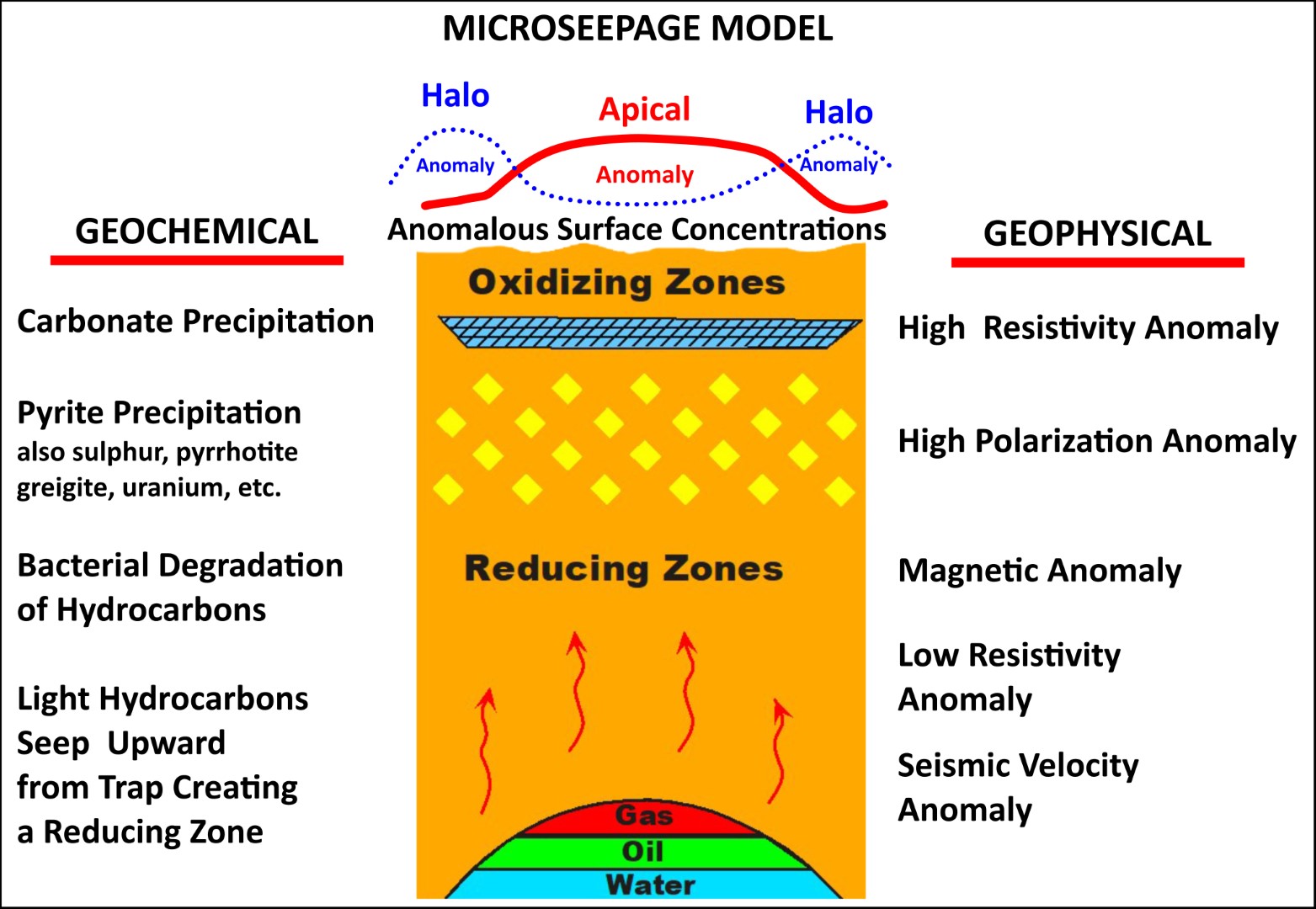
Figure-2 Microseepage Model and Geochemical and Geophysical Expressions
- Predominately VERTICAL seepage.
- Light hydrocarbon molecules (methane, ethane, propane, butane, thru C10+) escape from reservoirs and move vertically to the surface.
- Hydrocarbon migration is buoyancy-driven, reflecting dynamic reservoir pressures.
- Microseepage produces changes in near-surface environment – these changes can be detected and mapped.
- Near-surface anomalies can be related to hydro-carbons at depth. The surface extent of these alterations have been shown to approximate the productive limits of reservoirs in the subsurface.
Hydrocarbon detection surveys can be used at all stages of exploration. Some 20% of our surveys are for reconnaissance of frontier basins or other under-explored areas, and their purpose is to document the presence of an active petroleum system in the area of interest.
Most of our surveys are designed to high-grade exploration leads and prospects on the basis of their likely hydrocarbon charge; and an increasing number of high-resolution surveys are being conducted to aid in field development and to identify near-field opportunities.
Figure-3 below shows the integration of surface geochemistry and seismic data in the form of a Geochemical Line Plot displaying the Geochemical Leads and correlation with the seismic leads.
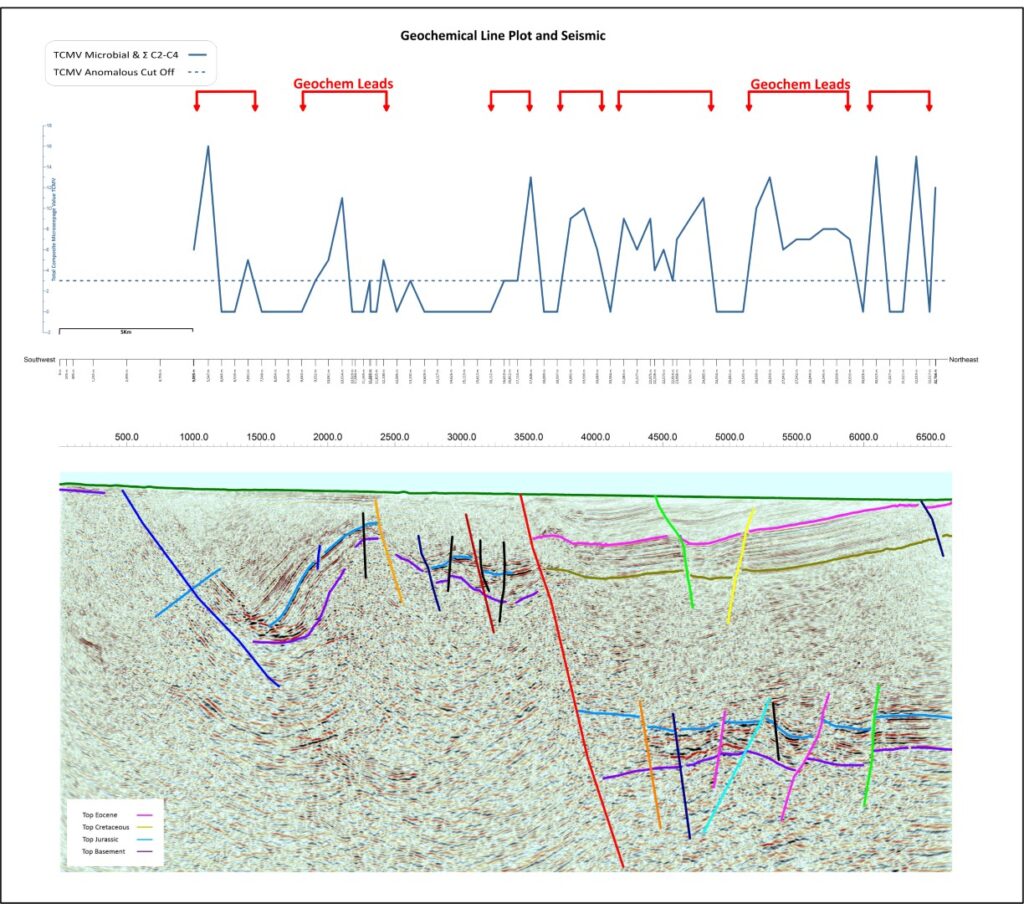
Figure-3 Geochemical Line Plot and Seismic
Primary Hydrocarbon Detection Methods
- Microbial (butane-utilizing bacteria) – Quantitative and Qualitative, detects thermogenic active hydrocarbon microseepage
- Soil Gas, C1 – C4 or C5 – Quantitative and Qualitative (headspace, probe or acid extraction) detects thermogenic and biogenic hydrocarbons
- Solid Phase Micro Extraction SPME (C4 – C20+) – Quantitative and Qualitative, detects liquid thermogenic hydrocarbons
- Fluorescence, a liquid hydrocarbon indicator – Quantitative and Qualitative
- Passive Soil Vapor analysis (C2 – C20+) – Qualitative
- Hydrocarbon seep analysis (GC, GCMS, biomarkers, isotopes,
Survey Design and Sampling Considerations
Hydrocarbon microseepage surveys in general require careful planning and implementation.
Microseepage data are inherently noisy and require adequate sample density to distinguish between anomalous and background areas.
To optimize the recognition of a seepage anomaly, the sampling pattern and sample density must reflect survey objectives, expected size and shape of the target.
Defining background values adequately is an essential part of anomaly recognition and delineation.
Under-sampling and/or the use of improper analytical techniques is a major cause of ambiguity and interpretation failures.
High-Resolution Surface Geochemical Surveys
High-resolution surface geochemical surveys are well suited for early delineation of field limits, field development, reservoir characterization, identification of by-passed pay, near-field exploration, and monitoring patterns of hydrocarbon drainage. Combined with other uses of surface geochemistry like high-grading leases, leads, and prospects, these new applications show great promise for better prospect evaluation and risk assessment in mature basins and new unexplored areas.
Figure-4 below sumarizes a recent review of drilling results for more than 3300 exploration wells all on conventional prospects and all surveyed geochemically before drilling documents that 80% of wells drilled on prospects with a positive hydrocarbon anomaly were completed as discoveries! In contrast, only 14% of wells drilled on prospects without a significant hydrocarbon anomaly resulted in a discovery. These results clearly document that hydrocarbon microseepage data – when properly acquired, interpreted, and integrated with conventional exploration data – can reliably predict hydrocarbon charge in advance of drilling.
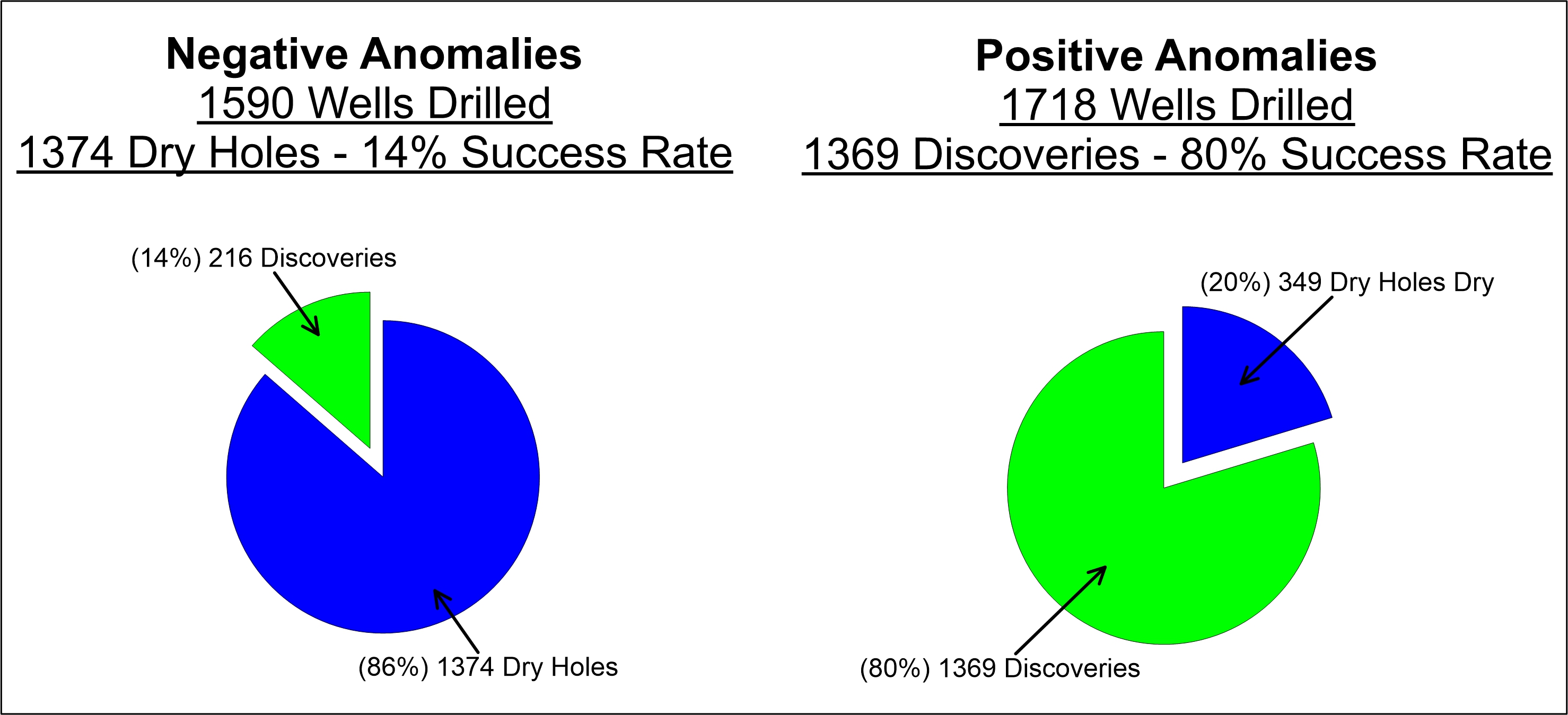
Figure-4 Statistical Summary of Drilling Results on Positive Microseepage Anomalies Vs. Negative Anomalies
